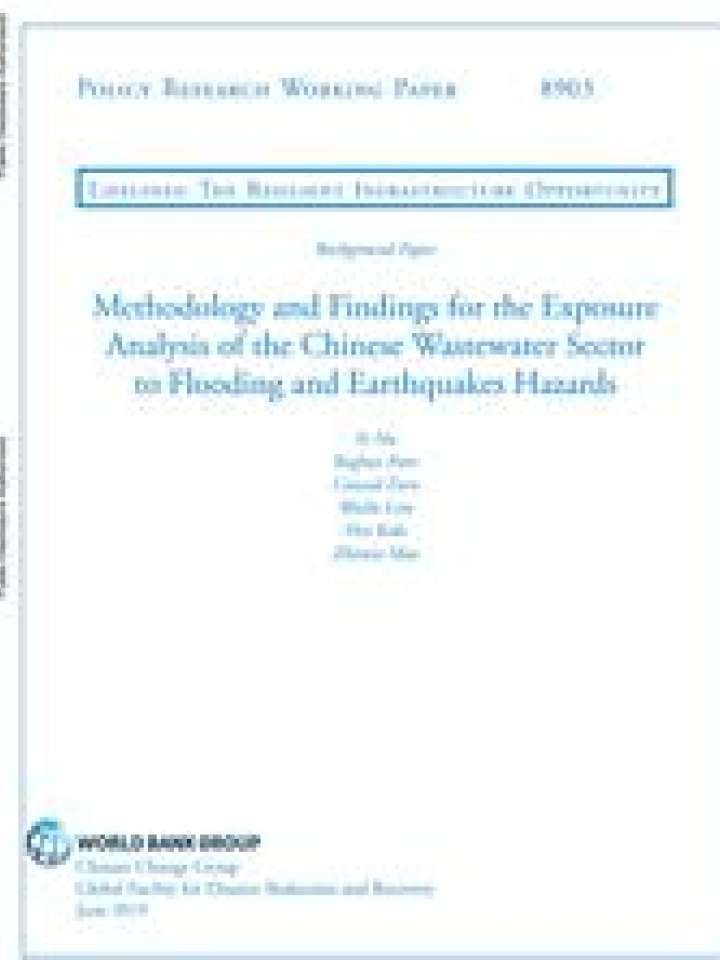Methodology and findings for the exposure analysis of the Chinese wastewater sector to flooding and earthquakes hazards
This paper describes the methodology and findings for the extreme hazard exposure analysis of the Chinese wastewater sector to flooding and earthquakes hazards. This analysis is undertaken for changing flooding, under climate scenarios, and earthquake exposure of a spatially accurate wastewater treatment plants (WWTP) database for China, covering a total of 1,346 assets with additional attributes quantifying the treatment capacity and users dependent on each plant. For flooding, the authors apply and downscale a global river routing (CaMa-Flood) model that quantifies the change degree of flood exposures from the present time period (1980-2005) to the near future time period (2016-2035) to a far future time period (2036-2055).
The authors find evidence that most climate models project increasing number of WWTP assets face climate-induced flood hazards in both the near and far future, potentially affecting as many as 208 million users by 2050. However, there are spatial and temporal variations from these projections which means that planning for resilient wastewater infrastructure requires more detailed understanding of the vulnerability attributes of WWTPs including their exact location, the number of users they serve as well as their flood protection standards.
For earthquakes, the paper examines the exposure of WWTPs to earthquake hazards through both seismic shaking and induced liquefaction. Overall, the authors demonstrate the significant risk that earthquakes can have on the WWTP process -- especially on centralized systems. By considering liquefaction susceptibility in combination with shaking, the paper exposes a number of WWTPs that face an increased level of exposure to damages following earthquakes compared to looking at shaking in isolation.
Explore further
